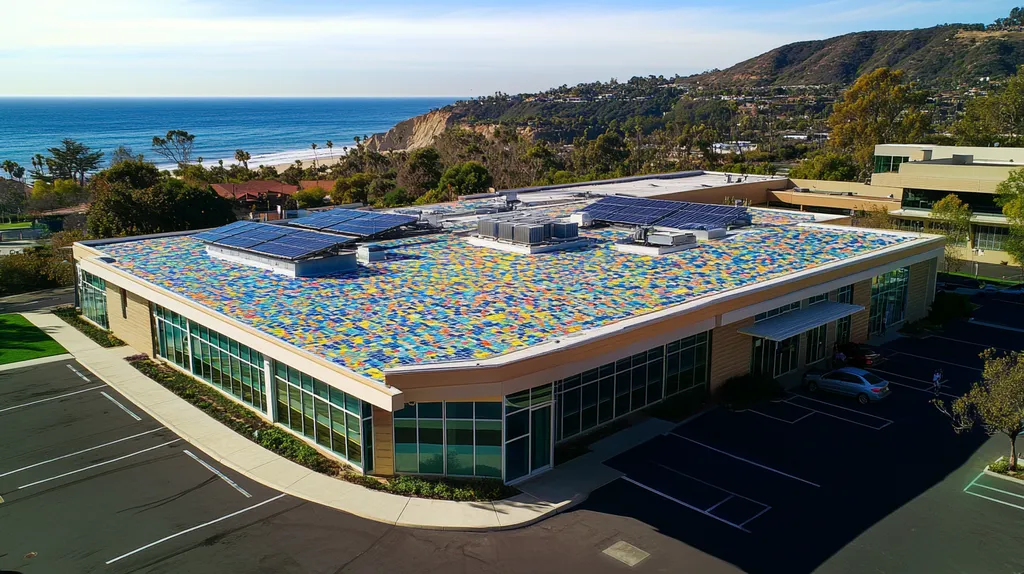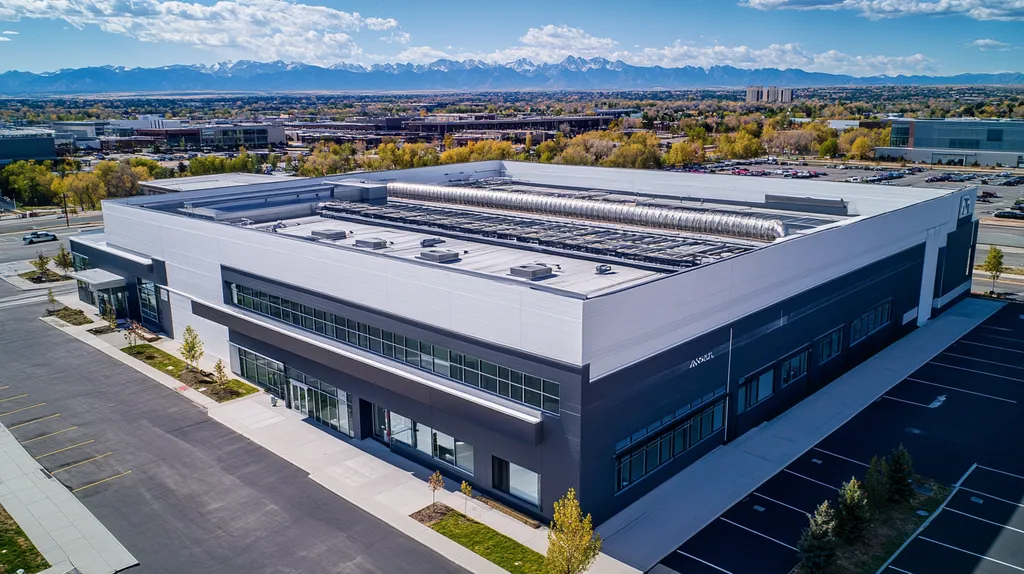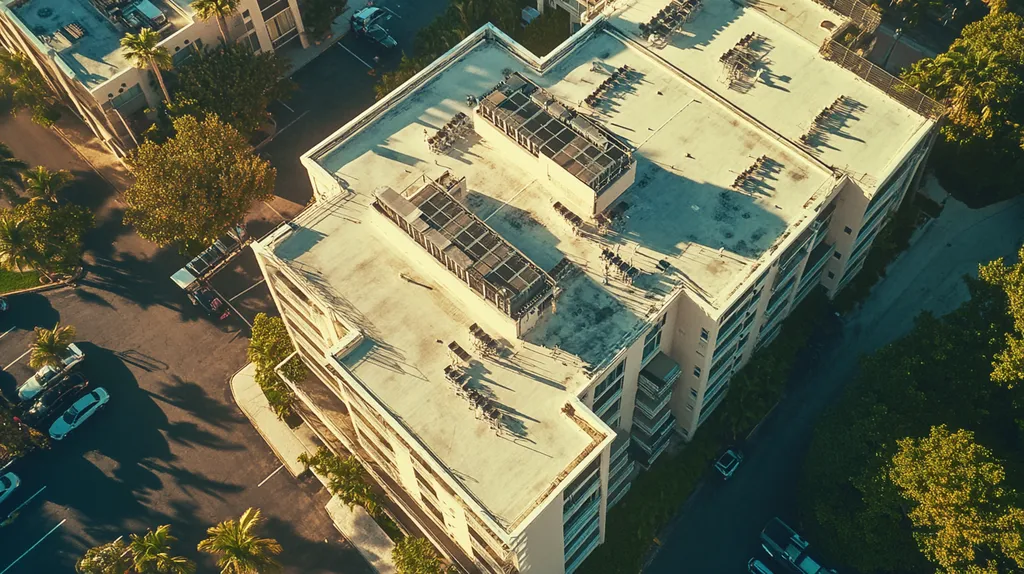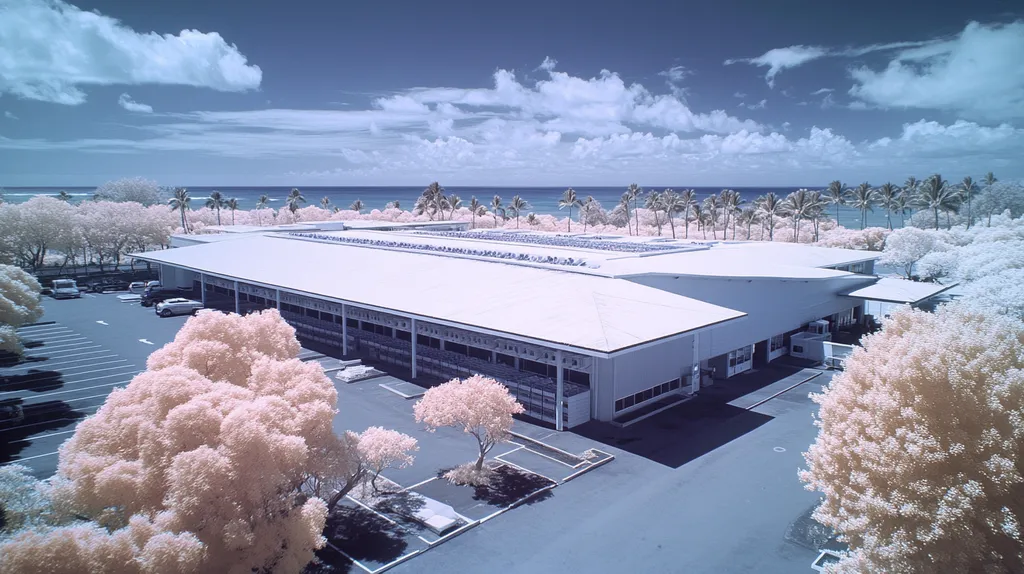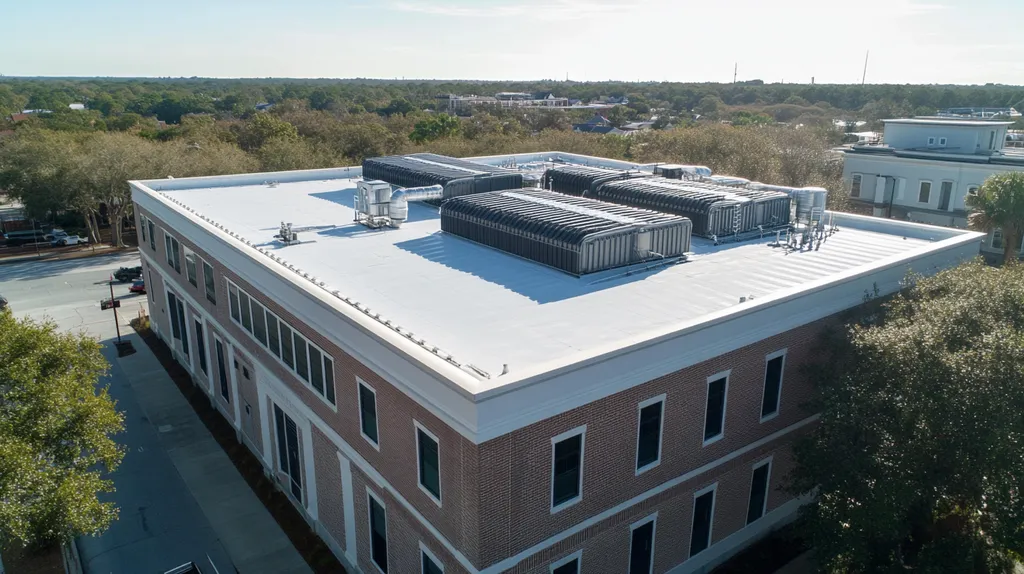Each year, commercial property owners spend over $12 billion on roof repairs and replacements, with nearly 40% of these costs stemming from inadequate warranty coverage. For facility managers, understanding roofing warranties can mean the difference between a minor repair and a catastrophic expense.
While warranties promise protection, their complex terms and conditions often leave buildings vulnerable to unexpected costs. From material coverage limitations to maintenance requirements, navigating warranty options requires careful consideration.
This comprehensive guide breaks down the critical factors facility managers must evaluate when selecting and maintaining roof warranties, including performance requirements, financial implications, and long-term operational considerations.
SECTION 1: PERFORMANCE FACTORS
Choosing the right roof warranty is vital for facility managers—getting it wrong can result in costly repairs and extensive headaches later. Every year, almost half a million commercial roofs in the U.S. are replaced, often due to limited or unsuitable warranty coverage. By understanding the specifics of warranties, facility managers can safeguard their investments and ensure that roofs perform well for years to come.
Types of Manufacturer Warranties
Manufacturer warranties are like insurance policies for your roof, varying in scope and protection. The two main types are material-only and system warranties. Material-only warranties cover defects in roofing materials, while system warranties extend to both materials and workmanship, offering broader protection.
Some manufacturers even provide comprehensive warranties that cover the entire roofing system for extended periods, sometimes up to 30 years. Though these warranties offer great peace of mind, they may come with stringent requirements that must be met to keep that coverage intact.
Understanding these distinctions is key to avoiding expensive pitfalls. For example, if a facility manager chooses a basic material warranty, they may end up bearing the costs of repairs that arise from improper installation.
Key Action Items
Coverage of Materials and Labor
It’s crucial to understand what exactly roof warranties cover. Material coverage refers to the manufacturer’s responsibility for defects in roofing materials, while labor coverage applies to the installation quality. This distinction can significantly impact a facility manager’s bottom line.
Take note of the specifics regarding labor coverage because some warranties only kick in for certain types of failures. Moreover, if the installation wasn’t completed by an approved contractor, warranty claims can easily be rejected.
Additionally, warranties often delineate different lengths for material and labor coverage. For instance, a warranty might protect materials for 20 years but only provide labor coverage for 10 years.
Key Action Items
Installation and Inspection Requirements
Many warranties come with specific installation requirements that are essential for their validity. Most manufacturers require roofs to be installed by certified or accredited contractors, which helps avoid potential warranty voids.
Routine inspections are typically mandated to maintain warranty coverage. These inspections can catch minor issues before they escalate into costly repairs. For example, scheduling a biannual inspection can help discover leaks before they cause extensive interior damage.
Facility managers should work with contractors to establish a clear inspection schedule. This proactive strategy not only ensures compliance with warranty terms but also extends the lifespan of the roofing system.
Key Action Items
SECTION 2: FINANCIAL CONSIDERATIONS
The financial implications of roofing warranties can have a profound effect on the long-term budgeting of commercial properties. Selecting the right warranty is more than just a line item in a budget—it is a strategic decision that can lead to unforeseen costs or diminish property value. For instance, choosing a low-cost warranty could result in significant repair expenses once coverage expires. Understanding the financial aspects of warranties is essential for facility managers and property owners to make informed decisions that protect their investments.
Cost of Different Warranty Types
The price of roof warranties can vary dramatically depending on the type and coverage level. Standard manufacturer warranties typically offer basic protection for about 5 to 15 years. On the other hand, extended warranties—some lasting up to 30 years—often come with a higher upfront investment.
However, while lower-cost options may initially seem appealing, they could expose property owners to greater long-term risks. For example, a limited warranty might leave out essential coverage, placing financial responsibility on facility managers for unexpected repairs. Striking the right balance between price and coverage is crucial for sound investment.
Moreover, it’s important to know what is included in each warranty. Some cover labor costs, while others might restrict coverage to just materials. By comparing total costs and potential liabilities, facility managers can align their roofing decisions effectively with their financial strategies.
Key Action Items
Prorated Coverage and Limitations
Many warranties come with prorated coverage, meaning the amount covered decreases over time. This can pose significant risks if a roof experiences failure in its later years. For example, a 20-year warranty may provide full coverage for the first 10 years but might reduce by 10% each subsequent year.
This reduction can leave facility managers financially exposed during crucial final years. Recognizing and understanding the prorated terms of a warranty is key, as it allows property owners to plan for future expenses in their long-term financial strategy.
Additionally, warranty contracts may include limitations on material types and acceptable installation practices. Failing to adhere to these guidelines can void coverage, shifting all costs back to the property owner. A thorough review of contract terms helps mitigate these risks.
Key Action Items
Budgeting for Warranty and Maintenance
Incorporating warranty considerations into the overall maintenance budget is critical for effective financial management. Facility managers should allocate funds for the warranty itself and for ongoing maintenance to meet warranty standards. Neglecting routine maintenance can lead to severe roof failures and significant out-of-pocket repair costs.
Establishing a strategic budget that accounts for both warranty renewal and regular maintenance can help shield against unexpected expenses. Setting aside a percentage of the facility’s annual budget specifically for roof maintenance ensures that funds are available when needed.
Furthermore, proactive maintenance can extend the roof’s lifespan, enhancing the warranty’s benefits. Regular inspections and timely repairs can spot potential issues before they escalate, creating a robust foundation for the facility’s financial health.
Key Action Items
SECTION 3: COMPLIANCE REQUIREMENTS
Overlooking compliance requirements is a risky move that can jeopardize warranty validity and lead to costly repairs. Straying from manufacturer specifications can void warranties, presenting facility managers with significant financial burdens. A poorly executed roof installation can allow water to penetrate, increasing maintenance costs. Understanding compliance is crucial for safeguarding investments and ensuring that roofs perform at their best for years to come.
Manufacturer Specifications and Standards
Following manufacturer specifications is essential for warranty eligibility. Each roofing system comes with detailed requirements covering materials, installation techniques, and maintenance protocols. For example, a single-ply membrane may specify certain adhesives or fasteners to ensure effective application.
Facility managers need to ensure contractors access and strictly apply these guidelines. Ignoring manufacturer specifications can create hurdles when filing warranty claims. Research shows that more than 70% of roofing-related disputes stem from deviations from the manufacturer’s instructions.
Regularly reviewing warranty documents and staying updated on manufacturer revisions is vital. Manufacturers may release updated specifications reflecting technological advancements and industry practices. Adhering to these guidelines not only safeguards investments but also promotes roof longevity.
Key Action Items
Regulatory and Code Compliance
Regulatory compliance is crucial not only for safety but also for warranty coverage. Local building codes establish minimum standards for safety, energy efficiency, and fire resistance. Failing to meet these can result in legal issues and void warranties, exposing facilities to risk.
Facility managers should stay informed about current building codes relevant to roofing systems. Collaborating with local authorities can help clarify compliance matters and avoid potential setbacks. For instance, certain jurisdictions may require specific drainage systems to be incorporated into roof designs.
Environmental regulations also play a significant role, particularly regarding material usage and disposal practices. Non-compliance can lead to heavy fines and mandates for reconstruction. Effectively managing these regulations is vital for maintaining commercial roofing warranties.
Key Action Items
Documentation and Record Keeping
Thorough documentation is essential for demonstrating compliance and validating warranty claims. Keeping records should include details on installation, maintenance, and periodic inspections. These documents are vital for tracking compliance with both manufacturer specifications and regulatory codes.
Facility managers need to implement an organized system for collecting and storing relevant information. A centralized digital platform can enhance accessibility and order. For example, retaining records of inspections and repairs allows for easy reference when addressing warranty matters.
Moreover, proper documentation becomes critical during disputes. Without sufficient records, companies may struggle to support warranty claims. Surprisingly, nearly 60% of denied claims are due to inadequate documentation.
Key Action Items
SECTION 4: RISK MANAGEMENT
Managing risks associated with commercial roof warranties is essential for property owners and facility managers. Overlooking warranty exclusions can trigger unexpected repair costs and liability issues. Research reveals that nearly 80% of roofing claims stem from misunderstandings about warranty stipulations. This section will demystify common exclusions, discuss maintenance neglect, and explore coverage for natural disasters, empowering managers to implement effective risk management strategies.
Identifying Excluded Circumstances
Each commercial roof warranty includes specific exclusions that outline situations where coverage does not apply. Common exclusions involve damage from improper installation, lack of maintenance, or external factors like falling debris. Recognizing these exclusions is critical for facility managers to maintain proper protection.
Neglecting to identify these exclusions can have serious financial ramifications. For instance, if a roof incurs damage due to inadequate care, but that negligence falls under an exclusion, the warranty provider may reject any claims. This underscores the importance of careful scrutiny of warranty documents.
Consulting with roofing professionals can enhance understanding of these exclusions. Open discussions about what is covered can clarify expectations and obligations. Maintaining accurate maintenance logs documenting inspections and repairs also helps strengthen claims when disputes arise.
Key Action Items
Mitigating Neglect and Maintenance Issues
Routine maintenance is crucial for preserving a roof’s warranty and preventing avoidable failures. Regular inspections help identify minor problems before they become major issues. Industry guidelines recommend conducting at least biannual inspections to keep roofs in top shape.
Facilities neglecting routine maintenance may encounter premature roof failures, leading to substantial repair costs. A well-maintained roof not only lasts longer but also keeps warranty protections intact.
To bolster warranty claims, facility managers should implement a robust maintenance management plan. Creating a checklist based on warranty requirements can streamline maintenance efforts while training competent staff helps in timely identification and resolution of potential issues.
Key Action Items
Natural Disaster and Acts of God Coverage
Natural disasters present significant risks to commercial roofs, yet warranties often provide limited coverage for such events. Acts of God, such as hurricanes, earthquakes, and severe storms, can cause catastrophic damage. Understanding warranty coverage for these events is crucial for comprehensive risk management.
Many warranties exclude damage from natural disasters altogether, which can leave facilities with unexpected reconstruction costs. For example, if a hurricane devastates the roof but the warranty excludes such damage, the owner must bear the full cost of repairs.
Facility managers should consider obtaining additional insurance to cover natural disasters. This could include comprehensive property insurance tailored to include provisions for such events. Additionally, developing a contingency plan that includes strengthening the roof against extreme weather helps mitigate risks and ensures continuity of operations during crises.
Key Action Items
SECTION 5: OPERATIONAL PROCEDURES
Regular maintenance of commercial roofs is essential to not only optimize warranty benefits but also ensure the overall safety of the building. Neglecting inspections can easily lead to unexpected repair costs and insurance claims that could have been avoided. To help facility managers protect their investments, this section outlines key operational procedures, including setting maintenance schedules, addressing defects promptly, and clearly defining contractor and manufacturer responsibilities.
Regular Inspection and Maintenance Schedules
Creating a routine inspection schedule is vital for preserving the lifespan of a commercial roof. Experts suggest conducting inspections at least twice a year, ideally during spring and fall. During these check-ups, facility managers should look for any visible wear, pooling water, and build-up of debris.
Documenting these inspections is crucial because it helps identify recurring issues and support warranty claims if problems arise down the line. Aligning inspection schedules with seasonal changes ensures that any potential issues are identified before they worsen. This proactive approach allows facility managers to avoid surprise expenses associated with emergencies.
Furthermore, implementing maintenance programs specific to the roofing system can further enhance durability. Regular maintenance tasks such as clearing gutters, inspecting seals, and ensuring drainage systems function properly play a key role in maintaining the roof’s integrity.
Key Action Items
Addressing Defects and Repairs
When defects are discovered during inspections, facility managers must respond quickly. Prompt repairs can stop small issues from growing into major problems that jeopardize warranty coverage. For instance, ignoring minor leaks can lead to significant water damage and mold—resulting in repair costs that can soar into the thousands.
Establishing a clear protocol for repairs is essential. This should include a detailed reporting system as well as a designated team responsible for managing ongoing fixes. Utilizing certified contractors who understand warranty requirements is critical, as unauthorized repairs may risk warranty voids.
In cases where warranties may be jeopardized, open communication with manufacturers can clarify acceptable repair methods. Many manufacturers provide valuable resources and guidance, which should be leveraged to avoid common repair pitfalls.
Key Action Items
Contractor and Manufacturer Responsibilities
Understanding the roles of contractors and manufacturers is vital for effective roof management. Contractors need to follow installation procedures that meet the manufacturer’s guidelines, as failing to do so can void warranties and incur additional costs for facility managers.
It’s essential for facility managers to ensure that roofing contractors provide clear documentation, including warranties and installation specifications, and are well-versed with the roofing system in use. This establishes accountability in roof maintenance.
Manufacturers also carry specific responsibilities, such as offering guidance on materials and maintenance practices. Facility managers should maintain open communication with manufacturers about any updates to warranty terms, particularly after severe weather events.
Key Action Items
SECTION 5: OPERATIONAL PROCEDURES
Regular upkeep of commercial roofs is crucial to maximizing warranty benefits and ensuring the safety of the building. Research indicates that neglecting inspections can lead to costly repairs and insurance claims that could have been avoided. Establishing solid operational procedures—including maintenance schedules, timely defect resolutions, and a clear understanding of contractor and manufacturer responsibilities—can help facility managers shield their investments.
Regular Inspection and Maintenance Schedules
Creating a routine inspection schedule is essential for protecting a commercial roof. Experts recommend performing inspections at least twice a year, ideally during the spring and fall. During these checks, property managers should look for visible wear, water pooling, and the accumulation of debris.
Documenting these inspections is vital for identifying recurring issues and supporting warranty claims if problems arise. Scheduling inspections in line with seasonal changes helps catch potential issues before they worsen. A proactive approach allows facility managers to avoid surprise costs linked to emergencies.
Investing in maintenance programs tailored to the specific roofing system can further enhance its longevity. Regular tasks, such as clearing debris from gutters, inspecting seals, and ensuring drainage systems function correctly, are vital for maintaining the roof’s integrity.
Key Action Items
Addressing Defects and Repairs
Facility managers must swiftly address defects identified during inspections. Prompt repairs can prevent small issues from escalating into major problems that jeopardize warranty coverage. For example, minor leaks left unattended can lead to severe water damage and mold growth, resulting in repair costs that can soar into the thousands.
Implementing a clear repair protocol ensures that issues are documented and addressed in a timely manner. This protocol should include a detailed reporting system and a dedicated team to manage ongoing repairs. Engaging certified contractors who understand warranty stipulations is crucial, as unauthorized repairs can threaten coverage.
In situations where warranties are at risk, open communication with manufacturers can clarify acceptable repair methods. Many manufacturers provide resources for repairs, which should be utilized to avoid unnecessary pitfalls.
Key Action Items
Contractor and Manufacturer Responsibilities
Understanding the roles of contractors and manufacturers is crucial for effective roof management. Contractors must comply with installation procedures that follow the manufacturer’s guidelines. Failing to do so can result in warranty voids and unexpected expenses for the facility manager.
Facility managers should ensure that roofing contractors provide detailed documentation, including warranties and installation specifications, and that they are well-versed in the specific roofing system in use. This establishes accountability in the roof’s upkeep.
Moreover, manufacturers have responsibilities as well, such as offering guidance on materials and maintenance practices. Facility managers should maintain ongoing communication with manufacturers about updates or changes to warranty terms, especially following severe weather events.
Key Action Items
The Bottom Line
With commercial roof replacements averaging $250,000-500,000, understanding and properly maintaining warranty coverage is crucial for protecting facility investments.
Effective warranty management requires a comprehensive approach spanning performance monitoring, financial planning, compliance tracking, and risk mitigation.
Facility managers must carefully evaluate warranty terms, ensuring coverage aligns with their building’s specific needs while accounting for potential exclusions and limitations.
Regular inspections, proper documentation, and strict adherence to manufacturer specifications remain essential for maintaining valid warranty coverage.
By implementing clear operational procedures and maintaining open communication with contractors and manufacturers, facility managers can maximize warranty protection and avoid costly oversights that could compromise their roofing investments.
FREQUENTLY ASKED QUESTIONS
Q. What types of commercial roof warranties are available?
A. There are material-only and system warranties for commercial roofs. Material-only warranties cover defects in materials, while system warranties cover both materials and workmanship. Choosing the right type is essential for long-term roof performance and cost savings.
Q. How do commercial roof warranties impact financial planning?
A. Selecting the right warranty is a financial strategy that can prevent unforeseen repair expenses and maintain property value. Lower-cost warranties may expose property owners to higher long-term costs if they lack essential coverage.
Q. Why is compliance important for commercial roof warranties?
A. Compliance with manufacturer specifications and local building codes is essential. Straying from these standards can void warranties, resulting in significant financial penalties and increased maintenance issues for facility managers.
Q. What common exclusions should I look for in commercial roof warranties?
A. Warranties often exclude damages from improper installation, lack of maintenance, or external factors. Understanding these exclusions is vital to maintain proper protections and avoid unexpected out-of-pocket costs.
Q. How frequently should I schedule inspections for my commercial roof?
A. It’s recommended to schedule roof inspections at least twice a year, ideally during spring and fall. Regular inspections help identify minor issues before they escalate into serious problems, preserving the roof’s integrity and warranty.
Q. What should I do if I find a defect during a roof inspection?
A. Address defects promptly to prevent them from escalating into major issues. Establish a clear protocol for repairs and utilize certified contractors to ensure compliance with warranty requirements.
Q. How can I ensure good communication with roofing contractors?
A. Maintain ongoing communication by requesting detailed documentation from contractors and clarifying warranty requirements. Setting expectations and defining roles ensures accountability and promotes effective roof management.
Q. What additional insurance options should I consider for my commercial roof?
A. Consider obtaining additional insurance to cover disasters like hurricanes and earthquakes, as standard warranties often exclude such events. A comprehensive property insurance policy can mitigate risks and protect your investment from unexpected events.


